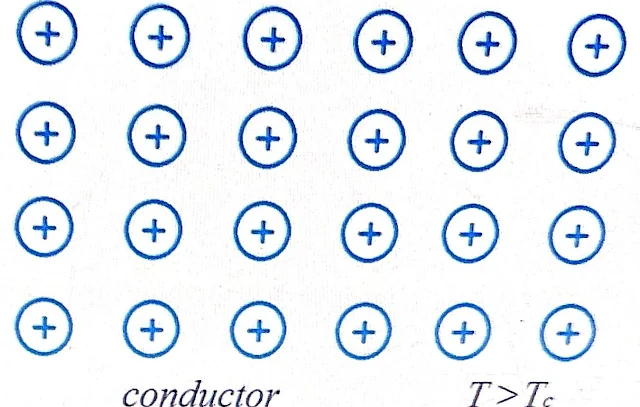John Robert Schrieffer And His Contributions to the World of Science (1931 – 2019)
John Robert Schrieffer
Life and career:
Schrieffer was born on May 31, 1931, in Oak Park, Illinois, and his parents were Louise (Anderson) and John Henry Schrieffer. His family relocated to Manhasset, New York, in 1940. In 1947, they moved to Eustis, Florida. Schrieffer's father was a former pharmaceutical salesman. He began a career in the citrus industry in Florida.
- During childhood, Schrieffer enjoyed playing with homemade rockets and ham radio. This hobby sparked his interest in electrical engineering.
- After graduating from Eustis High School in 1949, Schrieffer majored in electrical engineering for two years at the Massachusetts Institute of Technology.
- After that, he switched to physics in his junior year. He completed a bachelor's thesis on multiplets in heavy atoms under the direction of John C. Slater in 1953.
- Due to his interest in solid-state physics, Schrieffer began graduate studies at the University of Illinois at Urbana-Champaign, where he was immediately hired as a research assistant to Bardeen.
- After working out a theoretical problem of electrical conduction on semiconductor surfaces, Schrieffer spent a year in the laboratory applying the theory to several surface problems.
- In his third year of graduate studies, he joined Bardeen and Cooper in developing the theory of superconductivity.
In January 1957, Schrieffer recalled that he had an idea of mathematically describing the ground state of superconducting electrons. Schrieffer and Bardeen's collaborator, Cooper, had discovered that:
- electrons in a superconductor exist in pairs, now known as Cooper pairs, and the movement of all Cooper pairs within a superconductor functions as a single entity due to phonon-electron interactions.
- Schrieffer's mathematical breakthrough was to describe the behavior of all Cooper pairs together instead of each pair.
After completing his doctoral dissertation on the theory of superconductivity, Schrieffer spent the 1957–1958 academic year as a National Science Foundation fellow at the University of Birmingham in England and at the Niels Bohr Institute in Copenhagen, where he continued research into superconductivity. Following a year as an assistant professor at the University of Chicago, he returned to the University of Illinois in 1959 as a faculty member. In 1960, he went back to the Bohr Institute for a summer visit, during which he became engaged to Anne Grete Thomsen, whom he married at Christmas of that year. Two years later, Schrieffer joined the faculty of the University of Pennsylvania in Philadelphia.
- In 1964, he published his book on the BCS theory, the Theory of Superconductivity.
- He held honorary degrees from the Technical University of Munich and the University of Geneva.
- In 1968, Schrieffer and Cooper received the Comstock Prize in Physics from the National Academy of Sciences. [3]
- He was awarded the Oliver E. Buckley Condensed Matter Prize by the American Physical Society the same year.
Schrieffer became an elected member of the American Academy of Arts and Sciences in 1970 and the United States National Academy of Sciences in 1971. [4][5]
- In 1972, he shared the Nobel Prize in Physics with Bardeen and Cooper for developing the BCS theory.
- Schrieffer became an elected member of the American Philosophical Society in 1975. [6]
- In 1980, he became a professor at the University of California, Santa Barbara, and rose to chancellor professor in 1984, serving as director of the university's Kavli Institute for Theoretical Physics.
- In 1992, Florida State University appointed Schrieffer as the eminent scholar professor and chief scientist of the National High Magnetic Field Laboratory, where he continued research in room temperature superconductivity.
On September 24, 2004, while driving with a suspended license, Schrieffer was involved in an automobile accident that killed one person and injured seven others. [1] Schrieffer was said to have fallen asleep at the wheel of his car. On November 6, 2005, he was sentenced to two years in prison for vehicular manslaughter and incarcerated in Richard J. Donovan Correctional Facility at Rock Mountain near San Diego, California. [7]
BCS theory explains the condensation of Cooper pairs in superconductors. It describes the interaction between pairing nucleons in an atomic nucleus in Nuclear Physics.
History:
In the 1950s, there was progress in the understanding of superconductivity.
In a research report (1948), Fritz London proposed that the London equations may be the consequence of the coherence of the quantum state. [8]
In 1953, Brian Pippard proposed that coherence length would modify the London equations.
- Leon Cooper found that the bound states of electrons are due to an attractive force between two electrons, and this became a significant factor in his research paper in 1956. [9]
- In 1957, Bardeen and Cooper assembled these facts and formulated the BCS theory with Robert Schrieffer.
In April 1957, they published a letter on the microscopic theory of superconductivity. [10] In December 1957, they published calculations of specific heats and penetration depths.[11]
The discovery of high-temperature superconductivity in Lanthanum-Barium-Copper-Oxide at 30 K was in 1986. [12] Now, the high-temperature superconductors of about 130 K are available.
- Copper oxide materials are usually with high transition temperatures.
We know that the transition temperature of a material depends on pressure. Research is progressing to find superconducting materials at room temperature.
BCS theory alone cannot explain this transition temperature-pressure influence. Some other effects are also active. [13] These effects still need to be fully understood. These effects may control superconductivity at low temperatures for some materials.
We know that electrons repel. If there is a chance of small attraction between electrons in a metal, that causes a pairing of electrons. Paired electrons have lower energy than Fermi energy. That is, paired electrons are together as a single unit. In superconductors, this attraction is because of electron-phonon interaction. These electron pairs are Cooper pairs and are responsible for superconductivity.
Electrons in a metal behave as free particles. Electrons repel each other because of negative charges but attract the positive ions in the lattice of the metal. These positive ions move towards the crystal lattice and distort the lattice.
Imagine one electron surrounded by four positive ions from four corners. This attraction leads to an increase in the positive charge density of the lattice. Therefore, there will be attraction of other electrons toward this positive lattice. The result is that attraction overcomes the repulsion between electrons, and pairing occurs. The effect is due to electron-phonon interactions.
- The energy of the pairing interaction is weak (10^−3 eV).
- Thermal energy can break the pairs.
- So, pairs survive only at low temperatures.
- The electrons in a pair are not necessarily close and may be hundreds of nanometers apart.

Electrons and positive ions
Cooper pairs and superconductivity:
All Cooper pairs in a body tend to condense into the same ground quantum state, which is responsible for superconductivity.
Cooper considered the case of isolated pair formation. When we consider the practical situation, the pairing opens a gap in the energy states of the electrons.
That reveals that a minimum amount of energy is a requirement for all excitations.
The gap is due to many-body effects between electrons feeling the attraction. That is an indication of the isotope effect in superconductors. The isotope effect shows that materials with heavier ions have lower superconducting transition temperatures. Heavier ions are not easy for the electrons to attract and move, resulting in smaller binding energy for the pairs.
- Honorary degrees from the Technical University of Munich and the University of Geneva.
- In 1968, Schrieffer and Cooper received the Comstock Prize in Physics from the National Academy of Sciences.
- Oliver E. Buckley Condensed Matter Prize by the American Physical Society the same year.
- Became an elected member of the American Academy of Arts and Sciences in 1970 and the United States National Academy of Sciences in 1971.
- In 1972, he shared the Nobel Prize in Physics with Bardeen and Cooper for developing the BCS theory.
- Became an elected member of the American Philosophical Society in 1975.
He died on July 27, 2019, at a nursing facility in Florida while sleeping. He was 88 years old. [1]
References:
1. "Nobel Prize-Winning Physicist Schrieffer Dies in Florida". Associated Press. July 27, 2019. Retrieved August 11, 2019.
2. ^ "John Schrieffer". MyHeritage. Retrieved August 4, 2019. John, Robert Schrieffer was born in 1931, in Illinois, to John, H. Schrieffer, and Louise Schrieffer.
3. ^ "J. Robert Schrieffer". National Academy of Sciences. June 19, 2019. Retrieved August 4, 2019.
4. ^ "John Robert Schrieffer". American Academy of Arts & Sciences. Retrieved July 28, 2022.
5. ^ "J. Robert Schrieffer". www.nasonline.org. Retrieved July 28, 2022.
6. ^ "APS Member History". search.amphilsoc.org. Retrieved July 28, 2022.
7. ^ "Nobel Prize-Winning Physicist Gets Two Years in Prison for Deadly Crash". The Associated Press. Fox News. November 7, 2005. Retrieved July 28, 2019.
8. Wikipedia
9London, F. (September 1948). "On the Problem of the Molecular Theory of Superconductivity". Physical Review. 74 (5): 562–573. Bibcode:1948PhRv...74..562L. doi:10.1103/PhysRev.74.562.
10^ Bardeen, J. (March 1955). "Theory of the Meissner Effect in Superconductors". Physical Review. 97 (6): 1724–1725. Bibcode:1955PhRv...97.1724B. doi:10.1103/PhysRev.97.1724
11^ Cooper, Leon (November 1956). "Bound Electron Pairs in a Degenerate Fermi Gas". Physical Review. 104 (4): 1189–1190.
12 Bibcode:1956PhRv..104.1189C. doi:10.1103/PhysRev.104.1189. ISSN 0031-899X.
13^ Bardeen, J.; Cooper, L. N.; Schrieffer, J. R. (April 1957). "Microscopic Theory of Superconductivity". Physical Review. 106 (1): 162–164. Bibcode:1957PhRv..106..162B. doi:10.1103/PhysRev.106.162
14 Cooper, Leon N. (1956). "Bound electron pairs in a degenerate Fermi gas". Physical Review. 104 (4): 1189–1190. Bibcode:1956PhRv..104.1189C. doi:10.1103/PhysRev.104.1189.
.
- .

















Comments
Post a Comment